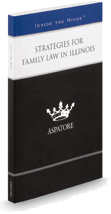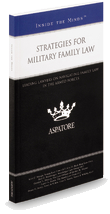Seeking a divorce is a life-changing decision. There are several different routes individuals can take, often depending on their willingness to work together to achieve satisfactory results. Traditionally, divorce litigation is a common route. For more amenable situations, mediation might be the answer. For amicable situations that are still as formal as a traditional divorce in Oklahoma City, OK, collaborative divorce may offer a solution. Unlike mediation, both parties are represented by an attorney rather than an unbiased third party. However, like mediation, the process takes place outside of the court system. That means the entire process is private.
Collaborative divorce relies on a willingness to work together and can often conclude with better satisfaction on both sides and less animosity. Since there is no discovery in a collaborative divorce, you do have to trust your spouse that all information has been provided.
If you are looking for a divorce proceeding that can minimize cost, protect your interest, save time, and keep the proceedings private, this could be the best route for you.
How Does a Collaborative Divorce Work?
A collaborative divorce consists of a team of individuals with different backgrounds who all work together to help separating couples reach a mutually beneficial divorce agreement without having to go to court. Each spouse will have an attorney whose focus is to help their client understand all their rights and have a fair opportunity throughout proceedings. While the role of the attorney is similar to that in a courtroom proceeding, there are significant differences.
In a traditional divorce that involves a trial, your attorney is essentially on the attack. It is their responsibility to prove to the judge why they should rule in your favor. This often involves a stop in direct contact with your spouse to ensure nothing can be used against you. With a collaborative divorce, however, your attorney will help facilitate conversation rather than halting it. Other individuals that may help include financial professionals, child specialists, or communication coaches. It largely depends on your unique situation.
The Goal of Collaborative Divorce
The main goal of a collaborative divorce is to settle the entirety of the divorce outside of the courtroom, while an attorney is still there to protect your interests. In a courtroom, your proceedings are a public record and can be accessed by anyone. You also lose some negotiation power since the judge makes the ultimate decisions.
A collaborative divorce is a great option for staying in control and minimizing the stress and frustration that can stem from a public divorce. A collaborative divorce will cover the same important issues such as:
- Asset and property division. The success of the asset and property division relies on the ability of both parties to be completely transparent. It is vital to have the evidence you need. Financial advisors and your attorneys will help guide you through divisions that can lead to satisfactory outcomes for both parties involved.
- Child custody. A child specialist is often involved in the collaborative divorce process to ensure the best interests of the child or children are considered. In most cases, joint parenting can be the most beneficial outcome. Along with your attorney, this professional will help guide determining the responsibility of dividing time, care, and any necessary financial support.
- Spousal support. In Oklahoma, a spouse can pursue spousal support in the case of a divorce. A neutral financial professional will help address this issue. Success in this aspect depends on the willingness to provide transparent financial information.
In a collaborative divorce, all topics commonly discussed in the courtroom can be addressed during the collaborative divorce meetings. You can achieve the same outcomes while saving both time and money. The success of this process largely depends on your ability to work together. While still a challenge, it is the best way for both parties to feel that their voice was heard and that they were each given a fair chance.
How Does This Process Work?
Even if you have a lot of assets to divide or child custody to decide, the process of a collaborative divorce is relatively simple. If you decide to pursue a collaborative divorce, you can expect to follow this process:
- Find your legal representation. You want to find an experienced family law attorney with whom you know you can work. You’ll want an attorney who will support your desire to have an open dialogue and who can guide you towards making informed decisions every step of the way.
- Meet with your attorney. Meeting one-on-one before your official divorce meeting helps your attorney understand your goals of the proceeding. While this is a collaborative process, your attorney is there to make sure you aren’t bullied into making decisions you don’t want. You can use this opportunity to discuss what you feel may be the hardest areas to resolve.
- Determine date and location. Collaborative divorce proceedings often take place in one of the attorney’s private offices. The first meeting involves signing a document that spells out your willingness to proceed out of court and what will happen if you do end up going to court. In most instances, you’ll have to secure a new attorney and start your case over in front of a judge. From this first meeting, you will determine a schedule for the following meetings.
- Determine support needed. The first meeting is often just the divorcing spouses and their attorneys. Following the first session, your attorneys will make suggestions for any additional professionals they feel will be beneficial to ensure smooth proceedings for all subsequent sessions.
- Attend sessions. Each session will continue to address the major concerns involved in your divorce. Most collaborative divorces conclude within three to four sessions, depending on the complexity and willingness to continue working together.
- Finalizing divorce. Once you’ve reached agreements that both parties find satisfactory, your attorneys will file any necessary paperwork to the court. Once approved by a judge, your divorce is official.
Is Collaborative Divorce Right for Me?
If you feel you may be able to work together, collaborative divorce could be the best route for you. The best place to start is to discuss your options with a professional attorney. They can listen to your circumstances and help you determine the best process for you. The professionals at Stange Law Firm can help you through every step of your divorce proceeding. Contact us to schedule an appointment today.



